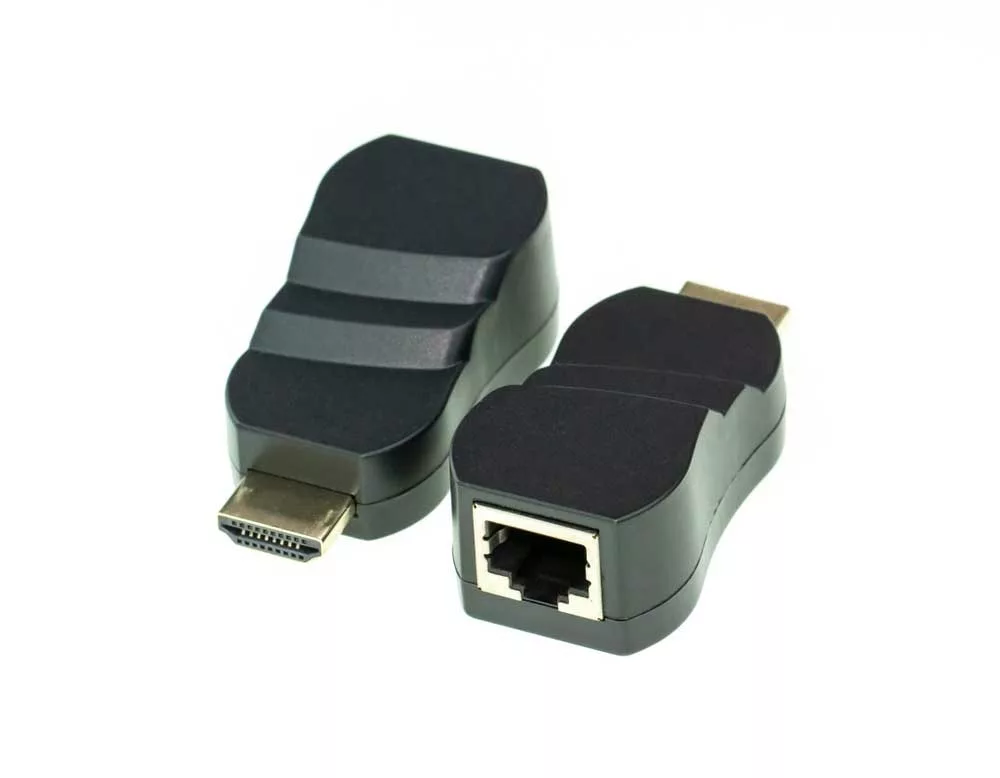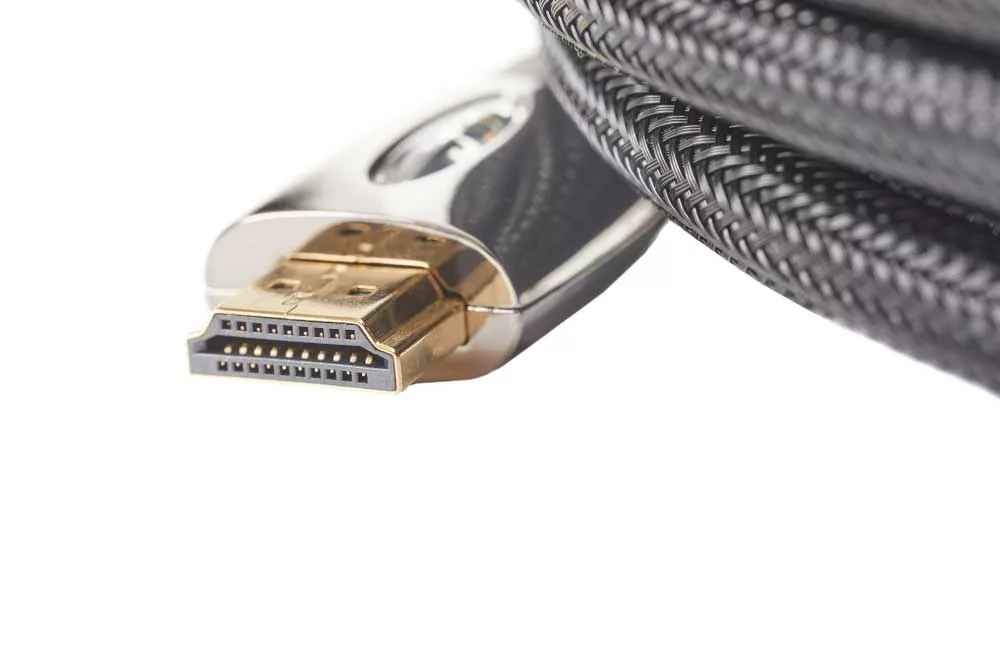About HDMI Extenders, HDMI, High-definition media Interface, is a signal format that connects source devices like game consoles, Blu-Ray players, or set-top boxes to display devices like PC monitors, TVs, or projectors.
With HDMI, you can now watch and enjoy 4K, 3D videos, and various technologies through HDMI cable connections.
However, everything has pros and cons, and HDMI cables are no exception.
HDMI cable has a restricted length and the maximum length of HDMI cables can be 50 feet. But it will be difficult for you to find a cable even above 25 feet.
Factors like interference, technical requirements, cost and differences in the devices’ output determine the length of an HDMI cable. If you take a long HDMI cable, the signal quality deteriorates.
Thanks to HDMI extenders, you can now witness high-quality HD videos without missing detail, even with devices placed far apart.
Let’s know in detail what they are and how you can use them.
Table of Contents
- What are HDMI extenders?
- Where are HDMI extenders used?
- Five types of HDMI extenders:
- The benefits of HDMI extenders:
- Conclusion:
What are HDMI extenders?
HDMI extenders are point-to-point equipment extending HDMI signals from the source to the display point.
It has a transmitter and a receiver connected through a coaxial cable, cat (x) cable, or a fiber optic cable.
The HDMI extender can extend an HDMI signal and IR, audio, and RS232.
Besides the extenders that use cables for connecting the transmitter and receiver, there are wireless extenders too.
They have a built-in antenna to communicate between the transmitter and the receiver. You only need to connect the transmitter to the source device and the receiver to the display device.
Lastly, HDMI over IP extenders have an ethernet switch for long-distance extension of signals. These extenders allow cat (x) cables or fiber optic cables based on the type of communication and the distance.

HDMI over cat (x) cables
You can use HDMI extenders in several places, such as retail stores, houses of worship, conference rooms, etc.
In video surveillance centers, transportation facilities, broadcasting centers, and military command areas, HDMI signals are extended for KVM (Keyboard, Video and Mouse) extension with USB signals.
Such a device is commonly known as a KVM extender.
Where are HDMI extenders used?
Some commonly found applications of HDMI extenders are:
Home theaters:
Earlier, getting signals from a source device kept in the basement to a display device in the living room on the first floor was impossible.
However, HDMI extenders allow the transmission of 4K ultra-high definition HDMI signals.
Apart from that, HDMI extenders with ARC/eARC transmit audio signals from your TV to an AV system placed at a long distance.
Bars and restaurants:
In bars and restaurants, the source device is often placed in a control room from where you want to cast your advertisements or digital menu to all the displays in your shop.
You can do this with an HDMI extender, which transmits high-quality 4K data from the source device to display.
Shopping mall and retail store:
HDMI extenders are of great use in shopping malls as you can extend 4K HDMI signals from a source in your equipment room to the various display devices placed in your settings.
The arrangement proves best when you want to advertise your products and services.

Braided HDMI cables
Five types of HDMI extenders:
HDMI extender over Cat Cables:
These extender kits are best for quality transmissions and are economical.
This top-selling equipment with a unique built-in chip can extend the length up to a maximum limit of 150 meters.
Whether you want it for personal use or business, these are the perfect choices.
HDMI extender over fiber:
When an HDMI extender uses fiber cable, data transmission becomes very efficient.
You can extend signals up to 1000 ft with these extenders, but they are too expensive.
You can use fiber extenders when you want to keep the wiring system neat and clean.
Wireless HDMI extender:
Wireless extenders do not use cables; thus, they are the best way to extend signals without clutter.
However, any interfering agent, be it a wall or anything else, can be trouble for wireless extenders.
So, it’s better to use them in settings with minimal interference.
HDMI extender over IP with an Ethernet Switch:
HDMI extenders over IP are integrated with an ethernet switch which can easily extend the signals to 600 ft or more.
Businesses with complex multi-media systems use these extenders to add convenience to their tasks.
The ethernet switch in the extender creates a matrix with splitters, switches, and extenders for flexible, professional audio / visual connection arrangement.
HDMI over coax extenders:
You can extend signal length up to 300 ft with these extenders.
| HDMI Extender type | The cable used for the connection | The length required for HDMI transmission |
| HDMI over coax | Coaxial cable | Up to 300 feet |
| HDBaseT extender | Cat cable | Up to 100 meters/ 328 feet |
| HDMI over fiber optic | Not required | Up to 200 meters/ 656 feet |
| HDMI over wireless | Fiber-optic cable | Up to 1000 feet |
| HDMI over IP | Cat cable | Up to 100 meters / 328 feet |
| HDMI over IP | Optic fiber cable | Up to 10 kilometers |
The benefits of HDMI extenders:
HDMI extenders can extend the length between your devices.
Irrespective of the source device location, you can enjoy your favorite movie on the output device placed anywhere in your home.
You can easily install an HDMI extender without any extra labor.
HDMI extenders over Cat have small connector heads, which makes their movement easy in walls, attics and other compact areas. On the contrary, HDMI cables come with large connector heads.
The fragile and bulky nature of HDMI cables tends to damage them easily during installation. On the contrary, the Category cables are highly durable, making them last for a longer time.
Setting up an HDMI extender is an easy task.
First, connect an HDMI signal source device like NVR, DVD, or STB to the HDMI extender transmitter.
Second, take Category 5/5a/6/6e/7 /fiber optic/coax cable and connect the transmitter to the extender receiver.
Note: Nowadays, transmitters and receivers of HDMI extenders come with an ethernet port for easy connection.
Last, connect the display devices like a projector, TV or monitor to the HDMI extender receiver.
Conclusion:
HDMI extenders are powerful devices extending long distances to connect your distantly placed source and display devices and give you the best viewing experience.
However, for best results, the cables you use with extenders must be of superior quality.
Get the best quality cables from Cloom, a leading manufacturer of various custom cable assemblies and wiring harnesses.
